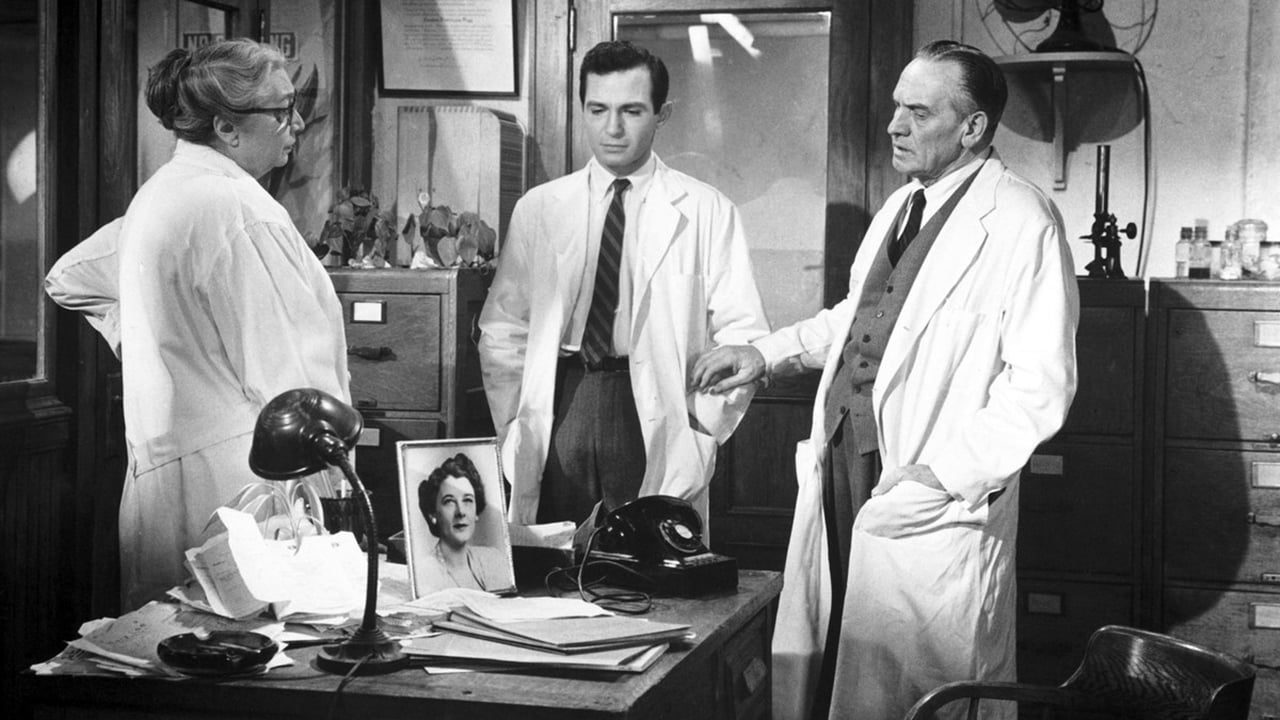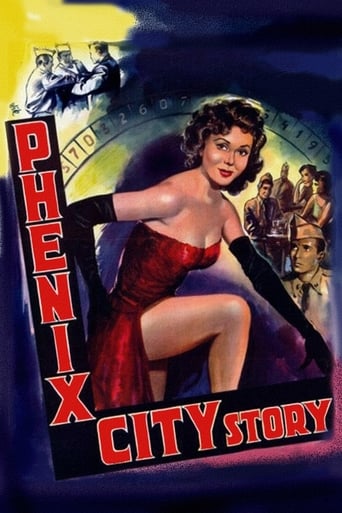

An incredibly intense true-crime drama, let down somewhat by the drawn-out prologue. The violence is more pervasive than anything in its era, except perhaps for war movies. Maybe the social relevance of The Phenix City Story allowed for scenes that otherwise wouldn't become commonplace in movies until the 60s or 70s.The great thing about the documentary focus, with its real-life edge, is that there are no Rambo-like supermen cutting a swath through Phenix's dens of iniquity. We're dealing the Pattersons and Gages against Rhett Tanner and his underworld cohorts; some strong personalities, and some strong men. But just men. There is a danger, though, in true-crime adaptations, to reduce the conflict to a melodramatic contest of good vs. evil.Most of the characters have some subtlety. Even the ringleader Tanner initially allows the Pattersons some slack, hoping that they'll cooperate, or at least look the other way at his Phenix City mayhem. He doesn't overtly threaten and attack them until it's obvious that they will oppose him. I find myself thinking that the Pattersons are almost too good; by the time that their supporters gather at their front door, I wish John McIntire's character would assent to their desire to attack the gangsters.Something that's handled very well is the seamless inclusion of the black family. They are involved in some of the more memorable incidents: the little girl's body thrown from the gangster's car; the subsequent reporting of which the policeman casually tosses off as "somebody dumped a n**ga kid's body in a front yard" (paraphrased here). Then, near the end, the girl's father persuades Albert not to drown his nemesis. Having important and sympathetic roles for black actors was unusual for the time, especially in a movie set in the South.The sin-city locale is a lightning-rod for film noir, whether in a fictional El Paso of 1958's Touch of Evil, or an actual small Alabama town. But Phenix City also has elements of a horror or a sci-fi monster film. A malicious entity at large in a small community, the unwillingness of many citizens to recognize or take action against it; and the courageous ones who do oppose the evil. Calling out the Army is certainly the go-to solution to deal with most monsters (even those monsters of the human variety). As much as I liked The Phenix City Story, I couldn't stand the initial ten-minutes with the reporter. Why tell the viewer what's going to happen, when you're going to show us? We're given more than enough introductory material with the textual commentary and the very effective narrated scenes. Showing the mundane assembly of all the tools of the racketeer's trade was a unique experience. It's also the perfect lead-in to the first scene at one of the gambling clubs. I now realize that there's a version without the reporter's bit. I'd give that a '9'. A very good movie in any case.
... View MoreThis film is set in post-War Alabama, in a city that serviced Ft. Benning, GA.It's a semi-documentary, but the facts are so obscure people probably think this is the real story. Clean living crusaders take up against a corrupt gang who run prostitution and gambling on 14th Street. When they feel threatened, the gangsters start fighting back, killing some people, but eventually losing. Or something.What is interesting is just how gritty this movie is for 1955. There are multiple uses of the N-word, a bunch of fights, an implied rape, a bunch of murders.What doesn't work out well are the semi-"Documentary" scenes in the beginning of the film that tell you this is a "true" story. Besides giving away the plot, they aren't well shot and look kind of sloppy.
... View MoreSometimes rush jobs really work out, like Phenix City Story. Consider that the movie was scripted, shot, and processed in less than a year after the triggering event of Patterson's murder. Credit the producers or someone for coming up with a first-rate cast, a marvelous director, and a big enough budget for location filming in the actual Phenix City. The result is the best of the "city expose" movies so popular at the time.There's a rawness to the violence here that's more convincing than usual, in part because of director Karlson's "feel" for the material and also because it appears to grow organically out of the seedy surroundings of honky-tonks and carousing soldiers on leave from Fort Benning. Credit too the fine, underrated Edward Andrews for blending oily charm with ruthless violence, just the qualities needed to run an operation of that sort. Kiley too delivers in spades, his rage unusually intense and realistic. The only questionable note is Katherine Grant's Ellie, seemingly too sweet and naïve for a dealer in a crooked set-up.Getting Karlson was a real coup. He was just hitting his stride as a top crime drama director during this period. His staging of the little girl's murder is a real grabber, along with the parking lot beating. In fact, the movie has an unusually pervasive atmosphere of unrestrained evil. Credit should also go to screenwriter Dan Mainwaring for a good tight script and some timely notes on the downside of vigilantism. Apparently, the lengthy prologue was added to ease censorship concerns, and, aside from historical value, can easily be skipped.Anyway, the film's a must-see for B-movie fans, a happy coming together of a number of underrated Hollywood talents.
... View MoreAs Judge Learned Hand said, "A society in which men recognize no check upon their freedom soon becomes a society where freedom is the possession of only a savage few; as we have learned to our sorrow." P. 190, The Spirit of Liberty (1944).The conflict between the greater good and individual liberty has gone on for years, swaying back and forth. In Phil Karlson's movie, made in the wake of World War II, there is too much liberty. People can do whatever they want. And those with the greater lust for power and money dominate others who are more like you and me, virtuous except for our collections of stiletto heels.Richard Kiley is the Army major who returns from the trials in Germany to find his home town has been taken over by thugs and gangsters who run rigged gambling and whore houses that cater to soldiers from nearby Fort Benning. Kiley's father, a lawyer, John McIntire, is a detached citizen, not objecting, not endorsing. Kiley is all moral about things. And he has a friend who is a kind of spy in the gambling house, Kathryn Grant, looking a bit more plump and juicy than she did in later motives.The thugs beat hell out of anybody who objects to their machinations. They kill a little black girl. Then they kill a WHITE guy. The white citizen is found in a ditch outside of town. "Could have been a car accident." "But he didn't have his car." "Could have fallen out of somebody else's car." Sure, it's a cliché. But this was the South in the 1950s and it was real enough. I remember hitching through the South and running into those old-fashioned signs, "Colored" and "White." Now, it's mostly history, thank God. If all this story sound familiar it's because we probably saw it more recently in "Walking Tall," with the same director recycling some of the same material. But this story deals with a regional problem, the Social Darwinism of the South, whereas "Walking Tall, virtually a remake, deals with what is strictly a local problem -- some bad guys doing bad things. "Walking Tall" could have taken place in Michigan. Now, this ethnography of Phoenix City, Alabama, is pretty primitive. If the "good" side seems to be making points in a trial, Richard Kiley is shown grinning, which is unlikely under the circumstances. When guys get in a fight, it doesn't last long but they emerge as bloody and bruised as they did when I was in high school. Frankly, neither movie ends with a chipper note. In "Walking Tall," a revenge movie, the protagonist's son is seen entering the hospital with a little .22 rifle to protect his Dad. (Did they think what they were doing? The kid is going to continue the tradition of killing the enemy.) In this one, martial law is imposed.Why should martial law be the answer? In the movie it seems to solve all the problems, at least for the moment. A more interesting question is why those soldiers from Fort Benning continued to come back to a rigged casino. Were the casinos and hookers providing something the soldiers wanted? If so, was it morally wrong? How about the cocaine industry? Some of us seem to want it desperately. Is it wrong for poor Colombian farmers to provide what we want? Can we condemn addicts and condone soldiers? Just asking.
... View More